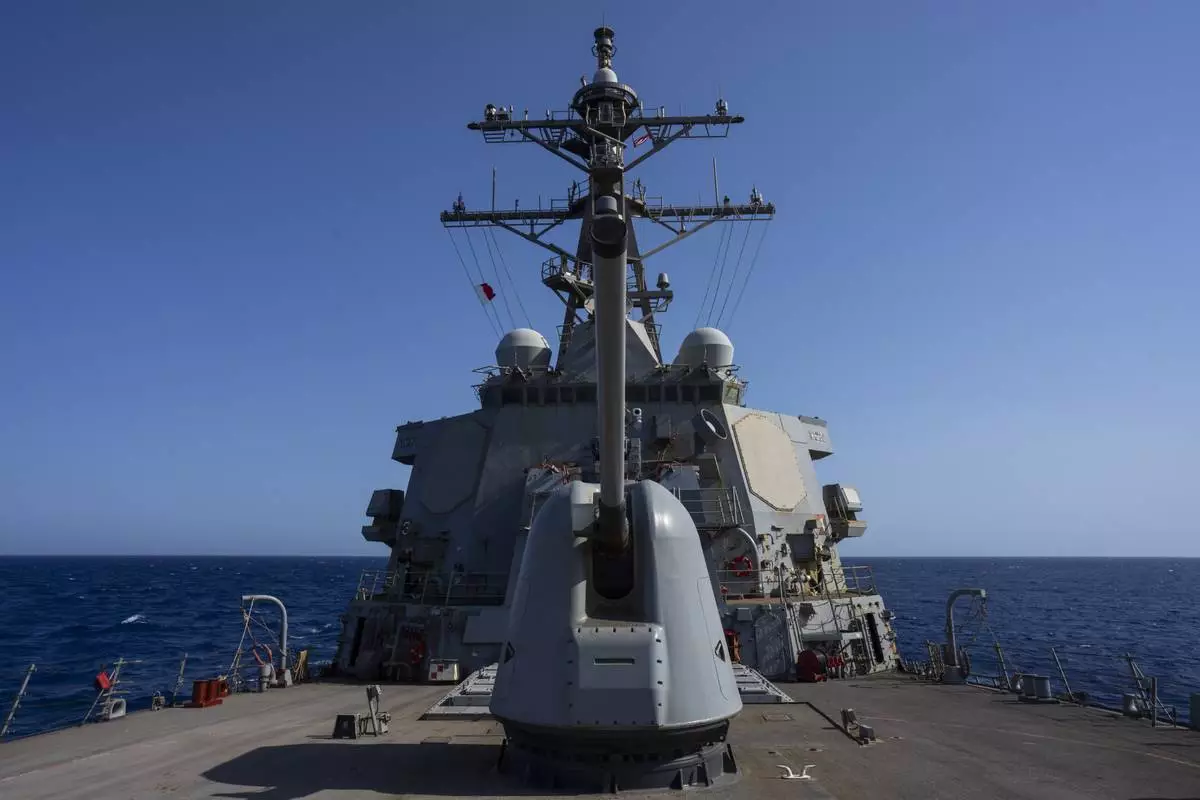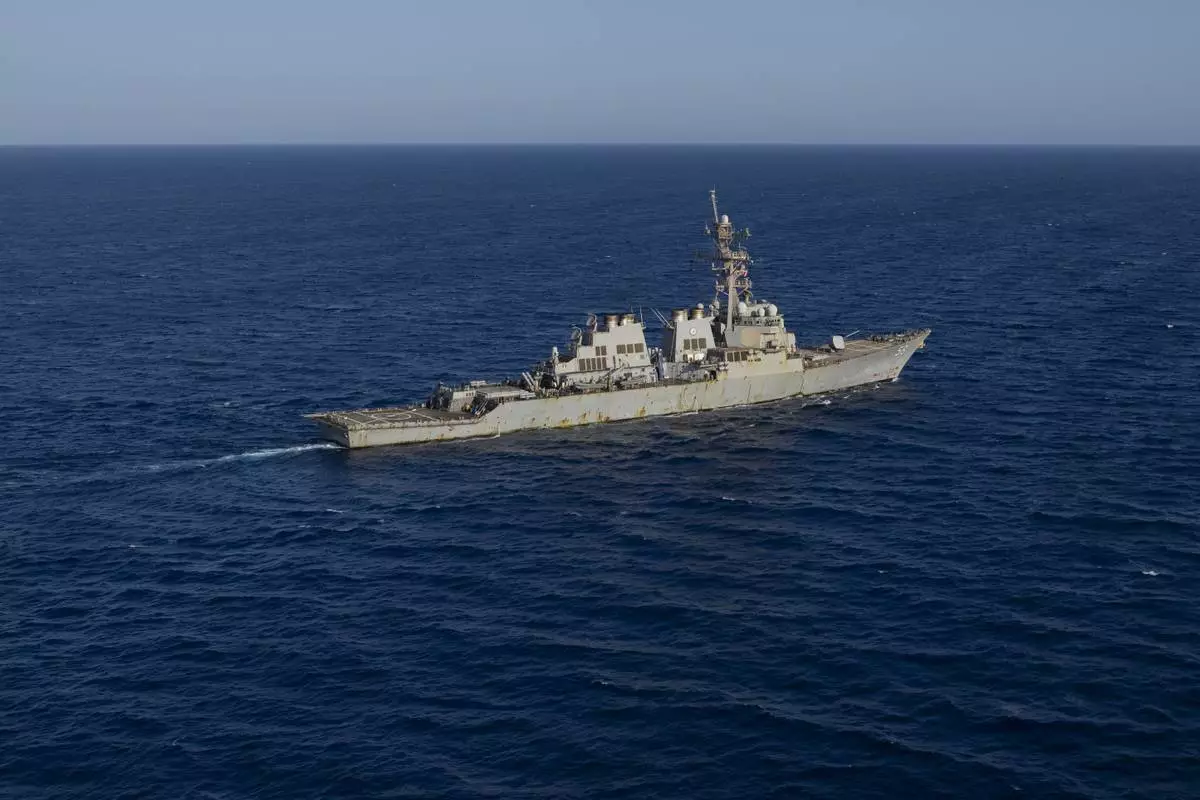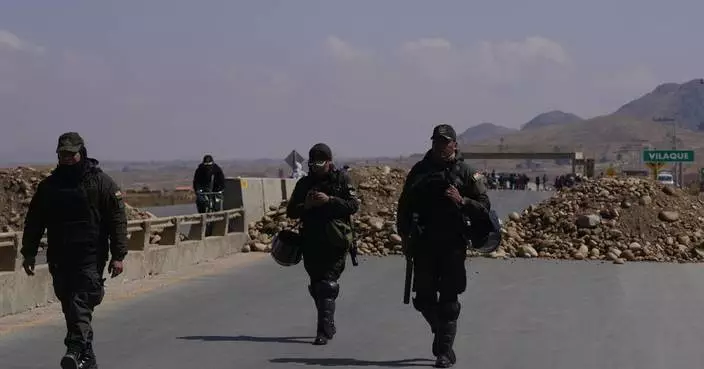A Wisconsin girl who stabbed a classmate to curry favor with the fictional horror character Slender Man will be committed to a mental hospital for 40 years, a judge ordered Thursday, explaining his decision as "an issue of community protection."

FILE - In this Oct. 5, 2017 file photo, Morgan Geyser, left, looks to her attorney Anthony Cotton as she appears in a in a Waukesha County Courtroom in Waukesha, Wis. (Michael Sears /Milwaukee Journal-Sentinel via AP)
Judge Michael Bohren granted the maximum penalty that prosecutors had sought and discounted Morgan Geyser's youth — she was just 12 — at the time of the attack in 2014.
"What we can't forget is this was an attempted murder," Bohren said. Earlier, he heard from four doctors who talked about how Geyser is making progress with her mental illness, to various degrees. But Bohren called the teenager "a fragile person" whose long history suffering from delusions make her a risk to hurt herself and others.

Morgan Geyser, 15, appears for sentencing before Waukesha County Circuit Judge Michael Bohren, Thursday, Feb. 1, 2018 in Waukesha, Wis. (Rick Wood/Milwaukee Journal-Sentinel via AP, Pool)
Geyser, now 15, spoke briefly before she was sentenced, breaking down in tears as she apologized to the girl she stabbed, Payton Leutner.
"I just want to let Bella and her family know that I'm sorry," she said, using a nickname for Leutner. "And I hope she's doing well."
Geyser and another girl, Anissa Weier, admitted that they lured Leutner into some woods near a suburban Milwaukee park. Geyser stabbed Leutner 19 times while Weier urged her on, according to investigators. They left Leutner for dead but she crawled out of the woods and got help from a passing bicyclist. All three girls were 12 at the time.

Waukesha County Circuit Judge Michael Bohren, begins the sentencing phase in the trial of Morgan Geyser, Thursday, Feb. 1, 2018 in Waukesha, Wis. Geyser is one of two girls who tried to kill a classmate with a knife to appease fictional horror character Slender Man. Prosecutors want Geyser to spend the maximum 40 years in a mental hospital for stabbing Payton Leutner in suburban Milwaukee in 2014. (Rick Wood/Milwaukee Journal-Sentinel via AP, Pool)
"Really judge, it's a miracle that Peyton is still with us, that she survived this," said prosecutor Ted Szczupakiewicz.
Geyser and Weier said they carried out the attack to appease Slender Man, a fictional online horror character who they said they feared would otherwise harm them and their families. Slender Man is often typified by spidery limbs and a blank white face.
Weier was sentenced to 25 years in a mental hospital in December. She pleaded guilty in August to being a party to attempted second-degree intentional homicide, but she claimed she wasn't responsible for her actions because she was mentally ill. In September, a jury agreed.
At Geyser's sentencing Thursday, doctors who evaluated her gave conflicting opinions about the type of institutional care she needs and the severity of her continued hallucinations.
Prosecutors presented testimony from a doctor who said Geyser reported still hearing voices from someone named "Maggie" as recently as September.
Dr. Brooke Lundbohm acknowledged that Geyser has made significant progress over the last three years, but said she emphatically believes she is still a danger to herself and others.
"This is not a close call," she said.
Geyser's attorneys argued for her to be moved to a less restrictive facility with children her age and the possibility of being able to be on outings with supervision if she's well enough.
"She has a condition she didn't choose to have," said Anthony Cotton, one of Geyser's attorneys.
They argued in court documents that she suffered from schizophrenia and psychotic spectrum disorder, making her prone to delusions and paranoid beliefs. But three doctors the defense called Thursday said she no longer shows psychotic symptoms and would benefit being in a residential facility where she can socialize with other teenagers. She's currently at a state mental facility with adults and doctors said she is the youngest patient there.
"I believe at the present time she is no more dangerous than any adolescent her age," said Dr. Kenneth Robbins.
Geyser pleaded guilty to attempted first-degree intentional homicide in October in a deal with prosecutors to avoid prison. She may seek conditional release before the 40 years are up.
WASHINGTON (AP) — The U.S. has kept an increased military presence in the Middle East throughout much of the past year, with about 40,000 forces, at least a dozen warships and four Air Force fighter jet squadrons spread across the region both to protect allies and to serve as a deterrent against attacks, several U.S. officials said.
As attacks between Israel and Hezbollah sharply spiked this week, worries are growing that the conflict could escalate into an all-out war, even as Tel Aviv keeps up its nearly yearlong fight against Hamas militants in Gaza.
Hezbollah says Israel crossed a “red line” with explosive attacks on its communications devices and vowed to keep up the missile strikes it’s launched since fellow Iranian-backed militant group Hamas attacked Israel on Oct. 7, setting off the war in Gaza.
Israeli Defense Minister Yoav Gallant — who has spoken repeatedly this week to U.S. Defense Secretary Lloyd Austin — has declared the start of a “new phase” of the war, shifting its focus to the northern front against Hezbollah in Lebanon.
So far, the U.S. hasn't signaled a troop increase or change as a result of the latest attacks, and there is already a beefed-up force in the region.
“We’re confident in the ability that we have there right now to protect our forces and should we need to come to the defense of Israel as well," Pentagon spokeswoman Sabrina Singh said Thursday.
A military official said the additional resources have helped as the U.S. patrols various conflict areas, including operations targeting the Islamic State group in Iraq and Syria, defending Israel and countering threats from Iranian-backed Houthi rebels in Yemen, who have targeted commercial ships in the Red Sea and launched ballistic missiles at Israel.
The officials spoke on condition of anonymity to describe U.S. troop movements and locations.
Here’s a look at the U.S. military presence in the Middle East:
Normally, about 34,000 U.S. forces are deployed to U.S. Central Command, which covers the entire Middle East. That troop level grew in the early months of the Israel-Hamas war to about 40,000 as additional ships and aircraft were sent in.
Several weeks ago, the total spiked to nearly 50,000 when Austin ordered two aircraft carriers and their accompanying warships to stay in the region as tensions roiled between Israel and Lebanon. One carrier strike group has since left and moved into the Asia-Pacific.
The beefed-up presence is designed both to help defend Israel and protect U.S. and allied personnel and assets.
Navy warships are scattered across the region, from the eastern Mediterranean Sea to the Gulf of Oman, and both Air Force and Navy fighter jets are strategically based at several locations to be better prepared to respond to any attacks.
The U.S. is back to one aircraft carrier in the region. Austin has extended the deployment of carriers several times in the past year so that on a few occasions, there has been the rare presence of two at once.
American military commanders have long argued that the presence of a formidable aircraft carrier — with its array of fighter jets and surveillance aircraft and sophisticated missiles — is a strong deterrent against Iran.
The USS Abraham Lincoln and its three destroyers are in the Gulf of Oman, while two U.S. Navy destroyers are in the Red Sea. The USS Georgia guided missile submarine, which Austin ordered to the region last month, had been in the Red Sea and remains in U.S. Central Command, but officials declined to say where.
There are six U.S. warships in the eastern Mediterranean Sea, including the USS Wasp amphibious assault ship with the 26th Marine Expeditionary Unit aboard. And three Navy destroyers are in that area.
About a half dozen of the F/A-18 fighter jets from the USS Abraham Lincoln have been moved to a land base in the region. Officials declined to say where.
The Air Force sent in an additional squadron of advanced F-22 fighter jets last month, bringing the total number of land-based fighter squadrons in the Middle East to four.
That force also includes a squadron of A-10 Thunderbolt II ground attack aircraft, F-15E Strike Eagles and F-16 fighter jets. The Air Force is not identifying what countries the planes are operating from.
The addition of the F-22 fighter jets gives U.S. forces a hard-to-detect aircraft that has a sophisticated suite of sensors to suppress enemy air defenses and carry out electronic attacks. The F-22 also can act as a “quarterback,” organizing other warplanes in an operation.
But the U.S. also showed in February that it doesn’t have to have planes based in the Middle East to attack targets. In February, a pair of B-1 bombers took off from Dyess Air Force Base in Texas and flew more than 30 hours in a roundtrip mission in which they struck 85 Islamic Revolutionary Guards Corps Quds Force targets in Iraq and Syria in response to an attack by IRGC-backed militias that killed three U.S. service members.

FILE - The Arleigh Burke-class guided missile destroyer USS Laboon sails in the Red Sea, June 12, 2024. (AP Photo/Bernat Armangue, File)

FILE - The Arleigh Burke-class guided missile destroyer USS Laboon sails in the Red Sea, June 12, 2024. (AP Photo/Bernat Armangue, File)

FILE -Crew members work in the combat information center of the Arleigh Burke-class guided missile destroyer USS Laboon during a deployment in the Red Sea, June 12, 2024. (AP Photo/Bernat Armangue, File)

FILE - An HSC-7 helicopter lands on the Arleigh Burke-class guided missile destroyer USS Laboon in the Red Sea, June 12, 2024. (AP Photo/Bernat Armangue, File)
















